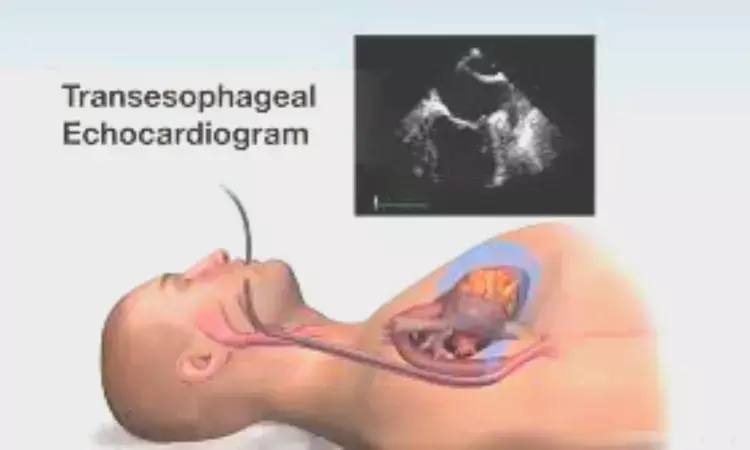- Home
- Medical news & Guidelines
- Anesthesiology
- Cardiology and CTVS
- Critical Care
- Dentistry
- Dermatology
- Diabetes and Endocrinology
- ENT
- Gastroenterology
- Medicine
- Nephrology
- Neurology
- Obstretics-Gynaecology
- Oncology
- Ophthalmology
- Orthopaedics
- Pediatrics-Neonatology
- Psychiatry
- Pulmonology
- Radiology
- Surgery
- Urology
- Laboratory Medicine
- Diet
- Nursing
- Paramedical
- Physiotherapy
- Health news
- Fact Check
- Bone Health Fact Check
- Brain Health Fact Check
- Cancer Related Fact Check
- Child Care Fact Check
- Dental and oral health fact check
- Diabetes and metabolic health fact check
- Diet and Nutrition Fact Check
- Eye and ENT Care Fact Check
- Fitness fact check
- Gut health fact check
- Heart health fact check
- Kidney health fact check
- Medical education fact check
- Men's health fact check
- Respiratory fact check
- Skin and hair care fact check
- Vaccine and Immunization fact check
- Women's health fact check
- AYUSH
- State News
- Andaman and Nicobar Islands
- Andhra Pradesh
- Arunachal Pradesh
- Assam
- Bihar
- Chandigarh
- Chattisgarh
- Dadra and Nagar Haveli
- Daman and Diu
- Delhi
- Goa
- Gujarat
- Haryana
- Himachal Pradesh
- Jammu & Kashmir
- Jharkhand
- Karnataka
- Kerala
- Ladakh
- Lakshadweep
- Madhya Pradesh
- Maharashtra
- Manipur
- Meghalaya
- Mizoram
- Nagaland
- Odisha
- Puducherry
- Punjab
- Rajasthan
- Sikkim
- Tamil Nadu
- Telangana
- Tripura
- Uttar Pradesh
- Uttrakhand
- West Bengal
- Medical Education
- Industry
Study evaluates Bridging Technologies: Enhancing Mitral Regurgitation Quantification through Integrated Echocardiography and Cardiac MRI Techniques

Quantifying mitral regurgitation (MR) using echocardiography poses challenges due to the complexity of assessing its severity. Preoperative quantification is crucial, and incidentally detected MR during cardiac surgeries requires accurate assessment. Cardiac MRI is deemed the gold standard for MR evaluation. The regurgitant volume (Rvol) measurement by the 3D volumetric method closely aligns with Cardiac magnetic resonance (CMR)-derived Rvol. Effective regurgitant orifice area (EROA) calculations rely on a single frame, without considering duration.
Recently published study focused on comparing the accuracy of Rvol and regurgitant fraction (RF) measurements utilizing 2D and 3D techniques, with the 3D volumetric method considered the reference standard. Methods included the 3D volumetric method, PISA method, and 3D vena contracta area (VCA). The Rvol by 3D volumetric method was calculated based on LVOT diameter, velocity-time integral, and LVOT area. Comparatively, PISA method quantified Rvol and RF based on flow convergence considerations across the mitral valve. The 3DVCA approach provided a 3D visualization of the regurgitation orifice, negating assumptions made by other methods.
Integrated Multiparametric Approaches
Integrated multiparametric approaches aided in grading MR severity, focusing on multiple echocardiography parameters. Statistical analysis, including correlation coefficients, Intraclass correlation coefficient (ICC), and Receiver operating characteristic (ROC) analysis, assessed the reliability and performance of the quantification methods. Results indicated the 3D volumetric method yielded a higher area under the curve and provided a more accurate cutoff value for severe MR compared to other techniques.
Quantification Issues
Issues encountered included overestimation of Rvol by PISA and 3DVCA methods due to complexities in measurements, such as inaccuracies in PISA radius assessment and VCA variations during different systolic phases. While the 3D volumetric method showcased advantages in quantification, technical expertise and operator dependency were acknowledged. Limitations were noted concerning patient selection criteria, potential underestimation in compromised LV functions, and the impact of general anesthesia on MR severity assessment.
Study Conclusion
In conclusion, the study emphasized the discrepancies in Rvol and RF measurements among various quantification methods for MR evaluation. While each method demonstrated strengths and limitations, understanding these nuances is essential in accurately assessing MR severity, especially in intraoperative settings. Recognizing methodological challenges and the importance of expertise in measurement techniques are imperative for precise MR quantification and subsequent management decisions.
Key Points
- Quantifying mitral regurgitation (MR) using echocardiography is challenging due to its complexity, and preoperative quantification is crucial for accurate assessment, with cardiac MRI being considered the gold standard for MR evaluation.
- The study compared the accuracy of regurgitant volume (Rvol) and regurgitant fraction (RF) measurements using 2D and 3D techniques, with the 3D volumetric method being the reference standard, and included methods like the PISA method and 3D vena contracta area (VCA).
- Integrated multiparametric approaches, focusing on multiple echocardiography parameters, aided in grading MR severity, with statistical analysis showing the 3D volumetric method outperformed other techniques in providing a more accurate cutoff value for severe MR.
- Issues encountered included overestimation of Rvol by PISA and 3DVCA methods due to measurement complexities, while the 3D volumetric method showed advantages in quantification, although technical expertise and operator dependency were highlighted.
- Limitations were identified regarding patient selection criteria, potential underestimation in compromised LV functions, and the impact of general anesthesia on MR severity assessment, emphasizing the need for precision in MR quantification and management decisions.
- The study concluded by emphasizing the importance of understanding the disparities in Rvol and RF measurements among different quantification methods for MR evaluation, highlighting the significance of expertise in measurement techniques for precise MR quantification, particularly in intraoperative scenarios.
Reference –
Devika Poduval et al. (2025). Intraoperative Transesophageal Echocardiography Quantification Of Mitral Regurgitation By Regurgitation Volume And Fraction Using 2D And 3D Techniques. *Annals Of Cardiac Anaesthesia*, 28, 161 - 169. https://doi.org/10.4103/aca.aca_218_24.
MBBS, MD (Anaesthesiology), FNB (Cardiac Anaesthesiology)
Dr Monish Raut is a practicing Cardiac Anesthesiologist. He completed his MBBS at Government Medical College, Nagpur, and pursued his MD in Anesthesiology at BJ Medical College, Pune. Further specializing in Cardiac Anesthesiology, Dr Raut earned his FNB in Cardiac Anesthesiology from Sir Ganga Ram Hospital, Delhi.


